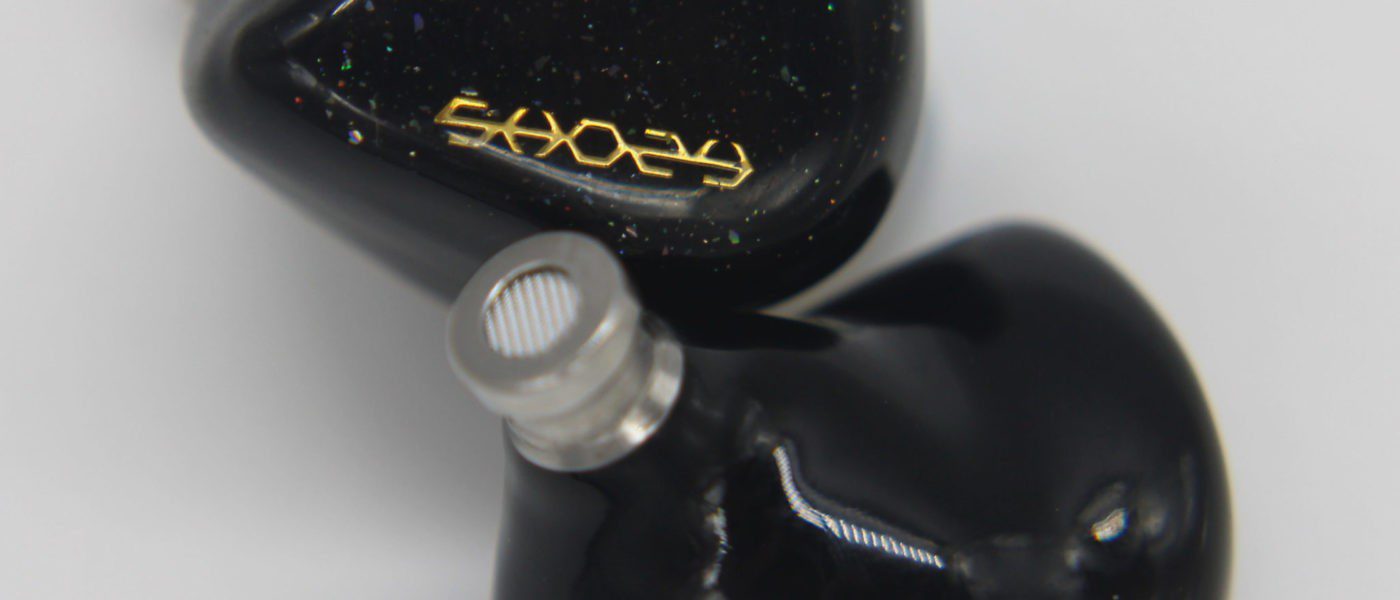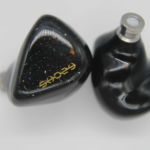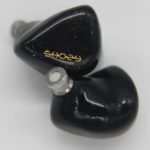Shozy Form 1.1
Disclaimer: I was provided the Shozy Form to review by Linsoul Audio. I have no financial interest in Shozy or Linsoul, nor have I received any incentives for this review. If you have an interest in this iem after reading the review, Linsoul Audio has them in-stock and ready to ship. Linsoul can be found at their website, facebook, Ali-express store, or Amazon store.
If you have an interest in the Shozy Form you can learn more about it from their website here.
Unboxing / Packaging:
The Shozy form arrived in a lift top box with a photo of the earpiece on the front along with most of the specs. On the reverse of the box, even more details about the build and internals are presented. Lifting the lid reveals the rubberized clamshell case with all the other items hidden inside. Outer packaging is well done, but inner packaging leaves a bit to be desired as it lacks the finesse of some of its competition. The kit hiding inside the case contains 9 sets of tips in 3 styles along with the cable and earpieces. It isnt the fanciest of kits at the price point, and the addition of a shirt clip, and a balanced cable would be welcomed with it being nearly $100 kit.
Build/Fit:
The shells are resin printed with hand-fitted face-plates and are well made and fitted with no slop, glue or gaps. The distinction between face-plate and inner shell is visible but not felt with a fingernail. The same is true of the vent on the rear, junction between resin and metal is neither raised or recessed and while visible is tough to feel even with a fingernail dragged across it. The bi-pin connector housing is visible due to a slight variation in color but is equally well fitted. Shells are on the smaller side with a shape somewhere between semi-circle (inner) and triangular (external) with the nozzles exiting the top of the lead edge with an upward and forward rake. The shape is ergonomic enough for long wear with good comfort, but the fairly shallow fit and venting means isolation is only average.
Internals:
The form is a hybrid in ear with a 9.2mm dynamic driver that utilizes a beryllium coated PVC diaphragm to handle the low end and a custom tuned balanced armature driver for the upper range. Nominal impedance is listed as 19Ω with a sensitivity of 100 dB/mW. Those numbers are very similar to the GR-i I recently reviewed with the big difference being the Form is externally vented while the GR-i is not. The Form performed well using a cell phone or tablet as source but does scale some both qualitatively and quantitatively as well. I found the Form paired well with the xDSD and the DTR1 .
Cable:
The form cable starts with a straight 3.5mm jack with a chrome and carbon-fiber housing with a short strain relief before the cloth wrapped cable exits in a twisted pair configuration. Shozy lists the cable material as high purity cooper with no silver plating. The splitter matches the jack with chrome and carbon fiber above which the strands exit as single cloth wrapped per side. A clear bead chin slider is somewhat loose and of limited utility. The last couple inches have plastic pre-formed earhooks before the cable terminates in .78mm bi-pin connectors. The connectors are housed in chrome, have a red plastic surround on the right and blue dots at the leading edge for alignment and orientation purposes.
Tips:
The Form comes with a better than average selection of tips with 6 sets of silicones and 3 sets of foams to choose from. I immediately found that I am not a big fan of the sound foams produce with this in-ear and began working on which of the silicone styles worked best for me. The large clear/white tip was the best of those provided for fit and sound in my case, but still not quite as good as the Shure olives (L) so sound notes are done with the Shure tips.
Sound:
Bass:
At the bottom end, the Form shows good sub-bass extension with ample rumble and roll-off not particularly noteworthy until well into the the 40Hz range. It has a boosted sub-bass and mid-bass presence, but has better than average control and is faster than many in its class in both attack and decay so that big bass stays fairly tight and defined throughout the range. Mid-bass while still elevated drops back from the sub-bass peak and while it still has some slam is not as potent as the sub-bass rumble. So while the Form may not be a bassheads dream, for those who want a bit of a bass boost but not at the cost of detail and texture, the Form does a good job. I’m impressed by the speed, detail, and texture here as I expect this in the $300 space but not in the $100 range.
Mids:
Lower mids are recessed and so have a slight mid-bass bleed but not such that it obstructs detail. Unfortunately, the mids seem a bit less detailed than the bass or treble but I can’t attribute that to the bass bleed, but more to the tuning of the cross-over and the fact that the mids come out a bit thinner as a result of the tuning. The mids climb back forward as you move toward the treble and vocals and strings benefit from that push albeit more the higher versions (violin vs viola and female vs male vocals) that seem to benefit the most. The upside is while female vocals seem a bit richer and more forward, they stop short of harsh or over-done.
Treble:
The lower treble continues the climb where the upper-mids leave off and at roughly the same level as the mid-bass leaving the sub-bass slightly ahead of it, but otherwise becoming one of the dominant features of the landscape. There is a drop off pretty rapidly above about 5kHz that troughs at about 7kHz before climbing back up to be even with the mids at about 8.5kHz and on upward to be even with the lower treble from about 10-12kHz before final roll-off above 12kHz. This gives the treble good energy while missing the area that often results in a shrill or piercing spike at the 7-9kHz range. Treble has good detail in the overall, and even with the trough doesn’t feel lacking in definition or texture. Cymbals are better than expected and snare rattle is closer to realistic than I usually anticipate at this price. There is some fatigue with long listening sessions, but not nearly as pronounced as it is with some others like the typical KZ iems. If I have to find fault here, pushing that final roll-off out a bit higher would give them a bit more open top end but that’s nitpicking.
Soundstage / Imaging:
Soundstage is wider than deep as expected but does have reasonable depth and even some sense of height in the presentation. I would liken the stage to a small arena like a high school auditorium rather than to a coliseum. Seating the orchestra is fairly straight forward with the occasional placement more beside than behind due to width. I think this is partially because the one place the Form seems to fall down a bit is the instrument separation. The more complex the track gets, the more jumbled the instrumentation begins to sound. For that reason, I recommend the Form be considered if your typical listening is small ensemble like rock, pop, even small jazz ensembles or string quartet. For full orchestral pieces, the Form struggles a bit. Imaging is reasonable good despite the separation issues and movement around the stage again is well represented as long as things don’t get overly busy and overwhelm it.
Thoughts / Conclusion:
The Shozy form is better than expected at its price point and while the kit is a bit lacking in comparison it otherwise reminds me a bit of the Ibasso IT-01 in both build and sub-bass although the Shozy is tighter and cleaner while the Ibasso is a bit bigger in that department. The V/U shaped signature is a good match for most popular genres but may not work for large ensemble pieces or classic orchestral works. I suspect Shozy was probably targeting the younger market that will mostly use a phone as the source and have current release popular music on their playlists. For that, it definitely is worth a look and competitive with things at considerably higher prices. If that defines your listening habits, you ought to give the Shozy a serious audition as you could do a lot worse and spend a lot more in doing so. Again, thanks to Linsoul for sending the Form to review and if you are interested, check their website here.
-
Bass - 7/107/10
-
Mids - 6/106/10
-
Treble - 7.5/107.5/10
-
Soundstage - 6/106/10
-
Imaging - 6/106/10
Summary
Pros: Build quality is better than expected, V/U shaped signature is a fun listen with popular genres,
Cons: Instrument separation is a step behind class leaders, treble tuning may seem a bit boring to some.

















